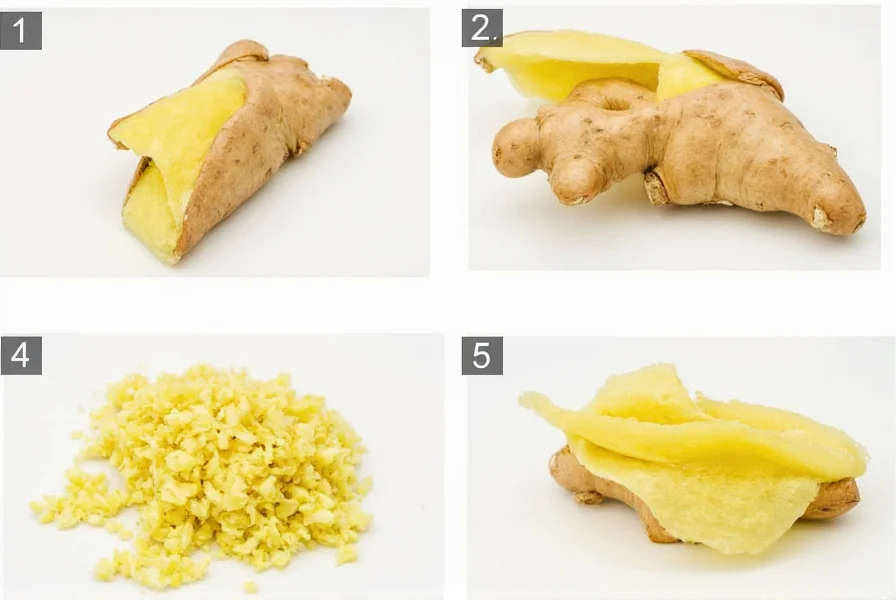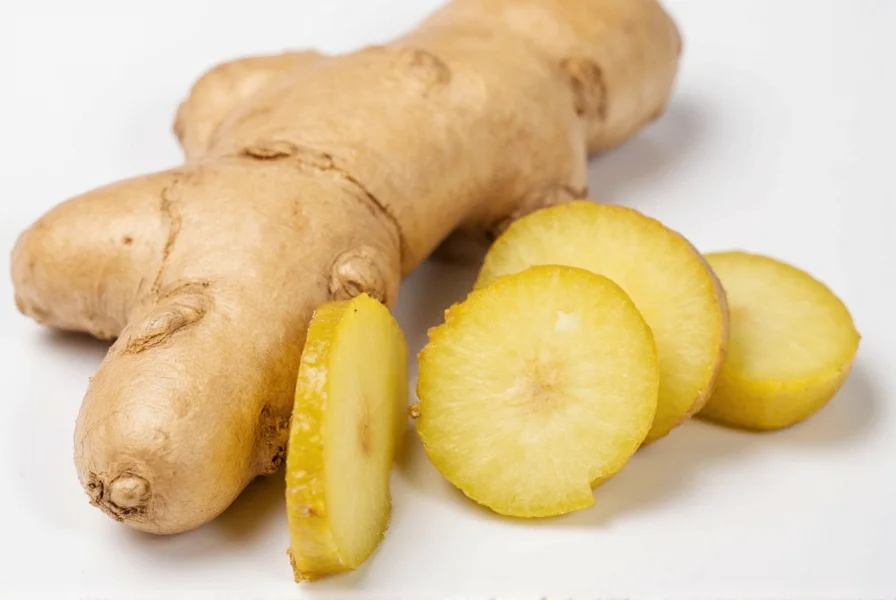Proper ginger preparation unlocks its full flavor potential and ensures optimal texture in your dishes. Whether you're making Asian cuisine, baking, or brewing tea, understanding how to handle this versatile root transforms your cooking experience. This guide covers professional techniques used by chefs to maximize ginger's aromatic compounds while minimizing waste.
Selecting Quality Ginger Root
Start with fresh, high-quality ginger. Look for firm roots with smooth, taut skin that feels heavy for its size. Avoid specimens with wrinkles, soft spots, or visible mold. The best ginger has a spicy, citrusy aroma when scratched. Young ginger has thinner skin and is more tender, while mature ginger has a stronger flavor and thicker skin that requires more thorough peeling.
Peeling Techniques: Minimizing Waste
Traditional knife peeling often removes too much valuable flesh. For how to peel ginger without wasting, use these professional methods:
- Spoon method: Use the edge of a teaspoon to scrape away the skin. The spoon's curvature follows ginger's natural shape, removing only the papery skin.
- Vegetable peeler: Works well for straight sections but can remove excess flesh on curved areas.
- Knife technique: For mature ginger with thick skin, use a paring knife at a shallow angle to remove minimal flesh.
Young ginger often requires no peeling—simply scrub thoroughly with a vegetable brush.
Preparation Methods for Different Culinary Uses
The best way to prepare ginger for cooking depends on your recipe's requirements. Each technique releases different flavor compounds and provides distinct texture.
| Preparation Method | Best For | Technique Tips |
|---|---|---|
| Grating | Sauces, marinades, baked goods | Use fine holes of box grater; freeze ginger first for easier grating |
| Microplaning | Dressings, finishing dishes | Yields finest texture; captures maximum volatile oils |
| Thin Slicing | Teas, stir-fries, pickling | Cut across fibers for tender results; use mandoline for uniform slices |
| Mincing | Sauces, rubs, spice blends | First slice thinly, then cross-cut into fine pieces |
| Julienne | Stir-fries, garnishes | Cut into matchstick shapes (1/8" x 1/8" x 1-2") |
Advanced Ginger Preparation Techniques
For specialized culinary applications, try these professional methods:
Making Ginger Juice
Grate peeled ginger using the finest holes of a box grater, then squeeze the pulp in cheesecloth or a fine mesh strainer. One ounce of fresh ginger yields approximately 1 tablespoon of potent juice—ideal for cocktails, dressings, and medicinal applications.
Creating Ginger Syrup
Simmer 1 cup sliced ginger in 2 cups water for 20 minutes, then add 2 cups sugar and simmer 10 more minutes. Strain and cool. This ginger syrup preparation method creates a versatile sweetener for beverages and desserts.
Pickling Ginger (Gari)
Thinly slice young ginger, blanch in boiling water for 30 seconds, then submerge in a mixture of rice vinegar, sugar, and a pinch of saffron (for traditional pink color). Refrigerate for 24 hours before using as a palate cleanser with sushi.

Storage Methods for Prepared Ginger
Understanding how to store fresh ginger properly extends its shelf life significantly:
- Refrigeration: Store whole, unpeeled ginger in an airtight container or wrapped in paper towels inside a plastic bag. Lasts 3-4 weeks.
- Freezing: Freeze peeled ginger root whole—it becomes easier to grate when frozen. Also freeze grated ginger in ice cube trays with water or oil for recipe-ready portions.
- Vinegar preservation: Submerge prepared ginger in rice vinegar in a glass jar. Lasts 6 months refrigerated and adds tangy flavor.
- Drying: Dehydrate thin slices at 135°F (57°C) for 6-8 hours for use in teas or grinding into powder.
Troubleshooting Common Ginger Preparation Issues
Why does my ginger taste bitter? Over-processing releases bitter compounds. Grate or mince just before use and avoid excessive cooking.
How do I prevent ginger from sticking to my grater? Freeze the ginger for 30 minutes before grating, or lightly oil your grater surface.
What if my ginger has started to sprout? Sprouted ginger is still safe to use—simply remove the sprouts and any soft areas. The flavor may be slightly milder.
Safety Considerations
While ginger is generally safe, handle with care if you have sensitive skin. The fibrous nature can cause minor cuts—use a stable cutting surface and proper knife grip. Discard ginger that shows signs of mold or has a musty smell, as these indicate spoilage that can't be cut away safely.
FAQ
Can I use ginger without peeling it?
Yes, young ginger with thin skin can be used unpeeled after thorough scrubbing. For mature ginger with thick, papery skin, peeling is recommended as the skin can be fibrous and affect texture in dishes.
What's the best tool for grating ginger?
A microplane zester provides the finest texture and maximum flavor extraction. For larger quantities, a box grater works well. Freezing ginger for 30 minutes before grating makes the process easier and reduces fiberiness.
How long does prepared ginger last in the refrigerator?
Freshly grated or minced ginger lasts 3-4 days in an airtight container in the refrigerator. For longer storage, freeze grated ginger in oil or water in ice cube trays, which preserves flavor for up to 6 months.
Why does my ginger taste different when prepared different ways?
Ginger contains volatile compounds that release differently based on preparation. Grating releases maximum zingiberene (the primary flavor compound), while slicing preserves more of the spicy gingerols. Cooking transforms these compounds—longer cooking creates milder, sweeter shogaols.
Can I substitute dried ginger for fresh in recipes?
Dried ginger has a more concentrated, less complex flavor than fresh. As a general rule, use 1/4 teaspoon dried ginger for every tablespoon of fresh ginger called for in a recipe. Note that dried ginger works better in baked goods than in dishes where fresh ginger's bright flavor is essential.











 浙公网安备
33010002000092号
浙公网安备
33010002000092号 浙B2-20120091-4
浙B2-20120091-4